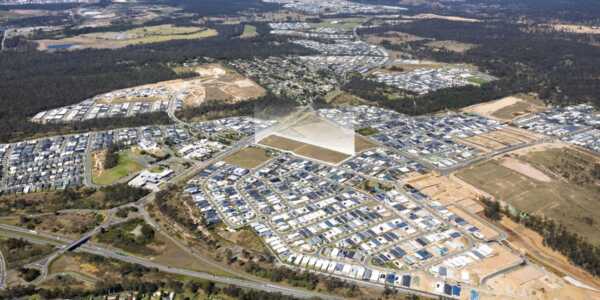Among investment asset classes, early learning centres (ELCs) are currently leading the pack. Increasing demand and ongoing bipartisan government support for the sector, particularly during the COVID-19 pandemic has reaffirmed its resiliency.
According to the 2020 Childcare Industry Insights report by Burgess Rawson, the average metro yield for childcare centres in the 19/20 FY was 5.63% and the average sale value has increased from $3.7 million in FY 18/19 to $4.6 million in FY 19/20.
As a result, many property developers at a range of scales are entering into this space for the first time, actively pursuing the purchase of suitable sites or identifying sites within their existing portfolios that can be further leveraged for this use. There is a range of factors that should be considered when selecting an appropriate site for an early learning centre including demand, competition and government policies.
Demand
Looking at the local demographics and population projections are a great place to start. Locations that have growing numbers of pre-school aged children are obviously ideal. Additionally, check whether there are one or more primary schools nearby that a new early learning centre could act as a feeder for.
We're working with a developer client who is planning to establish an ELC on an existing landholding, located at an interface between residential and industrial zones in Bayswater, Victoria. Bayswater has been experiencing strong population growth and is projected to have growing numbers of children in the 0-4 age group over the next 20 years. The location ensures that its catchment will be fed by demand from both the residential area and from the thousands of employees that work within the industrial and commercial area.
Competition
Developing a new early learning centre in an area where other early learning centres already exist needn't be a dealbreaker. Having one or two competitors is not necessarily a problem, especially if they are currently operating at capacity and have long waitlists or are of low capacity (80-90 places).
The recent announcement of the introduction of government-funded three-year-old kinder in Victoria presents a further competitive opportunity in that state as many existing centres will not be equipped with space or facilities to incorporate this service.
Competition was not an issue for our recently completed Bira Bira ELC in Cheltenham Victoria. This centre is specifically designed to accommodate a differentiated learning-outcomes focussed, family-oriented model of care.
Government policies
It is important to be aware that there are national, state and often, local policy guidelines that govern the quality of childcare services and facilities. These documents contain specific guidelines with regard to the physical environment that early learning centres provide and can influence where they are able to be located.
National legislation including Education and Care Services National Law Act 2010 (National Law) and the Education and Care Services National Regulations 2011 (National Regulations) requires specific indoor and outdoor spatial requirements: for each child being educated and cared for by the service, the education and care premises has at least 3.5 square metres of unencumbered indoor space and at least 7 square metres of unencumbered outdoor space, (regulation 107 and regulation 108).
At the state level, government departments responsible for education often have specific guidelines for the design of childcare centres that incorporate the relevant national laws and cover e lements such as site selection and location; building orientation, envelope, building design and accessibility; visual and acoustic privacy; noise and air pollution; and, traffic, parking and pedestrian circulation.
Many local governments also have specific policies for the planning and approval of childcare centres- these are often a reflection of state government policies and national legislation. However, local planning rules for non-residential development can also influence site selection.
Our Ferntree Gully ELC project in Victoria, is located on land our client already owned that was zoned for residential use. The City of Knox planning guidelines dictate that a percentage of a residential site must be provided for green space, and the council was insistent that these criteria remain if they were to allow it to be utilised for a childcare centre. This required careful due diligence to ensure the site would be suitable.
While these recommendations with regard to demand, competition and government policies remain relatively fixed, there are a couple of other market factors to consider. In the past, we have seen an emphasis on ELCs located near to commercial activity centres. We are yet to see the long term impact of the shift to working from home that the COVID-19 pandemic has brought about. It maybe that in future, there will be greater demand for ELCs that are located in accessible suburban areas.This has potential benefits such as strengthening communities by having children from the same area going to childcare together and increasing convenience for those that work from home.
There is also strong research to support the benefitsof three-year-old kinder. Its credentials with regard to improved school-readiness may prompt other Australian states to implement government supported programs, which will only spur further market opportunities for new early learning centres
Gaurav Rajadhyax, R Architecture
To find out more about R Architecture, please visit https://www.rarchitecture.com.au/
Gaurav Rajadhyax is director and founder of architecture practice, R Architecture. During his 15 years as an architect, he has worked with some of Australia’s leading architecture practices on large, complex multi-residential, education, retail, and heritage projects. Gaurav specialises in working with developers as well as early learning centre operators and educators to undertake site selection, feasibility, design and delivery of contemporary early learning centre facilities. R Architecture is currently undertaking projects in Sydney and Melbourne.









